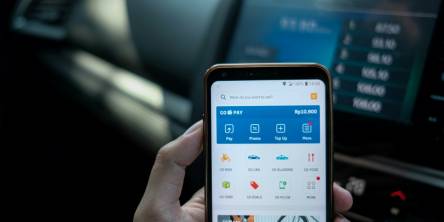Mobile ID: Reduce Fraud and Enhance On-boarding

The professional world is really unruly and business security can be compromised at the drop of a hat. Unlike some of the other financial crimes out there, Mobile-based crime is not as easy to track as it seems. In the virtual world (well, almost virtual, since it is the era of technology and smartphones), one has to deal with the stealth of cybercriminals, who have mastered the art of breaking codes and performing ID breaches.
Mobile User Onboarding
Mobile phones have become the new go-to devices for customers these days. Different businesses have to engage their customers through the use of expressive apps, in order to keep their revenues rolling. Going by the increasing dependencies between people and their phones (as per Pew Research Center’s recent report, more than 46% smartphone owners consider their phones to be an inseparable part of their lives), a lot of businesses are on-boarding new customers through the use of smart apps, which are customized for smartphones.
If one was to consider historical trends, it has been realized that customer on-boarding through the use of mobile phone apps can be a tedious, and a challenging task. Simply put, if a customer is asked to enter a series of details over a mobile phone, chances are, you will end up with an abandoned form at the end of the day. What will this mean? A lost customer, and a massive revenue loss, all rolled into one. This does not sound too appealing, right?
Since the customer on-boarding problems have been decoded, how does one save the customer from endless typing instances, and prevent fraud at the same time? How does a business know that the person being on-boarded is a genuine customer and not a cyber sneak who is an impersonator?
Mind your Business over your Mobile
When you have a business, which requires customers’ personal information, along with some other customer details, chances are you will tend to do everything in your power to be able to get ahead of the situation. In such cases, one has to ensure that the information forms have the option to auto-load the details from social media sites, like Facebook, Twitter, etc. For some people, this might be an easy task, for others, not so much.
As an example, think of a situation wherein your customer has snapped a photograph of their ID and the information has been uploaded automatically on the information page. Post these minor updates, through the process of Mobile ID verification, your business app should be able to automatically validate the documents from a centralized identification portal. By performing these basic validation procedures, a business can perform some mandatory checks, which include the likes of identity verification and know your customer (KYC), amongst other things.
As an added measure, what you can do is allow your customers to take a selfie and upload it on the app as a part of the identity verification procedures. Through facial recognition software, the selfie and the picture on the uploaded document can be matched to ensure accurate results. This way, the true identity of the document holder can be matched, and fraud reduction procedures can be enhanced manifold. This multi-level verification procedure can help bring about a fraud reduction by ensuring all KYC procedures are followed to the tee, and also ensure customer satisfaction at the same time. This is not all, for the on-boarding procedures are hastened and everything happens within a single mobile session.
Digital Identity Verification
Digital technology can be used in a lot of different ways. Identity verification is an important segment of the customer on-boarding process, and it should be performed with the utmost care, to remain compliant with the laws of the local authorities.
Similar Articles
Optimize app localization for iOS users across the EU with language, cultural, and regulatory adaptations. Engage users and boost retention with these tips!
Discover the top 10 mobile app development trends of 2024! Explore 5G, AI, AR/VR, blockchain, and more to stay ahead in the ever-evolving app development landscape.
With its triple-lens design and fantastic photo and video quality, the iPhone 11 Pro Max is extensively acknowledged for its superior camera system. But problems can occur with also one of the most advanced technologies. If you're having issues with the iPhone 11 pro max camera lens, knowing the typical problems and how to repair them
Protect your app from threats with AppSealing's robust, all-inclusive security solution. Safeguard user data, ensure compliance, and maintain top performance.
Selling products online has become an increasingly popular way to reach potential customers. Online marketplaces are a great platform to showcase your products, but managing multiple listings on various platforms can be quite time-consuming.
Enterprise app development has emerged as a crucial driver for maximizing return on investment (ROI). By streamlining operations, enhancing customer engagement, and enabling data-driven decision-making, custom enterprise applications empower organizations to achieve their strategic goals efficiently.
Understand the influence AI developers have on today's app and web creation, driving efficiency and innovation.
The amalgamation of technology and innovation has revolutionized the financial services sector, leading to the birth and rapid growth of the FinTech industry. It is vital to understand that robust mobile app development services stand at the forefront of this innovation, paving the way for seamless, secure, and user-friendly solutions that cater to the evolving needs of modern consumers.
Financial technology, or FinTech, has evolved rapidly, and fintech apps are gaining popularity. These apps offer services ranging from mobile banking to investments and have changed the way users view and interact with financial services.









